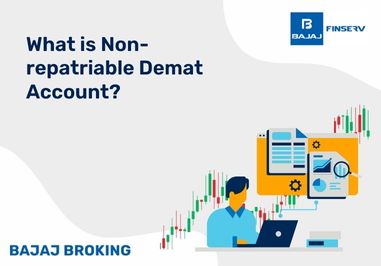Retirement planning has to begin years before retirement. Financial comfort is essential to lead a stable life even after your regular income stops. Many people begin investing in various schemes and policies that can yield returns in their retirement years. To help people generate sufficient retirement income, the government of India has also taken various measures. One of these is NPS. The National Pension Scheme or NPS is one of the most popular retirement investments governed by the government of India.
If you have an income, now is the perfect time to plan for your retirement. Starting with an NPS Tier 1 account allows you to gradually build a corpus that ensures financial security and sustains your lifestyle post-retirement.
Features of NPS Tier I Account
The NPS Tier 1 Account serves as the primary account under the National Pension System. It is a long-term retirement-focused account designed to help individuals build a retirement corpus over time. The account matures at 60 years of age, but investors can choose to extend it up to 70 years.
Partial withdrawals are allowed for specific needs such as medical emergencies, education, or marriage. Investments made in this account are eligible for tax deductions under Section 80C and 80CCD(1B). Only one NPS Tier 1 Account is permitted per individual, and premature closure is allowed under specified conditions.
This account offers stable financial planning, making it suitable for disciplined retirement investment. It does not allow unrestricted withdrawals and has structured limitations to ensure long-term capital formation. Investors should note that returns are market-linked and not guaranteed.
How to Open an NPS Tier 1 Account?
Opening an NPS tier 1 account is quite easy and simple. Make sure to check your eligibility before applying for an NPS account. Investors can choose to open an NPS account online or offline. Here we have explained both for your ease:
Visit the nearest POP-SP (Point Of Presence Service Provider) which may be an authorised bank
Ask for an NPS tier 1 form and duly fill in the details required
Attach the required documents and submit the form
Make the payment of ₹500 to open the account
After the account is activated, make sure to make a minimum of ₹1000 investment annually to maintain the account.
Visit the eNPS account and click on the “Registration” option on the website.
Fill in the required details carefully and submit to receive the OTP. Carefully submit the OTP received on the mobile.
Choose the option “NPS Tier 1” account. You must note that an NPS Tier 1 account is mandatory even if you plan to later open an NPS Tier 2 account.
You will be given the option of 8 fund houses. You may pick one of the fund houses of your preference.
Now, you need to choose between the two modes of investments available; auto and active. Under auto investment, the investment is allocated and rebalanced according to your age. In the active mode of investment, you are the charge of the investment allocation.
Enter details of the nominee and specify their share as well
Attach the required documents in the correct format
Pay ₹500 to open the account
Upon completion of the registration, you will receive a PRAN (Permanent Retirement Account Number).
Interest Rate on NPS
The amount you invest in the National Pension Scheme (NPS) tier 1 account is partially invested in annuity plans. 40% of the investment amount goes towards annuity plans. However, the returns are not guaranteed, unlike various other government schemes. Investors need to carefully choose from the 8 fund houses and depending on the fund house you choose, the returns may vary.
There are a total 8 fund houses: HDFC Pension Management Company, SBI Pension Fund, DSP Blackrock Pension Fund, UTI Retirement Solutions Pension Fund, ICICI Prudential Pension Fund, LIC Pension Fund, Reliance Capital Pension Fund, and Kotak Mahindra Pension Fund. In case you do not voluntarily choose a fund house, the SBI Pension Fund will be chosen by default.
Additional Read: National Pension Scheme (NPS) Charges & Fees
NPS Tier I Withdrawal and premature closure
NPS tier 1 is a long-term investment scheme. So, the best idea is to stay invested until maturity to reap the maximum benefits. However, under certain circumstances like children's marriage, serious illnesses, education, etc., you may choose to withdraw the amount partially or even close the account before maturity. However, you must note that only up to 25% of the invested amount can be withdrawn after 3 active years of the NPS account. Withdrawal can be applied for a maximum of three times.
Check out how and under what conditions are these features available:
The balance in your NPS account can be withdrawn in 4 situations:
NPS Withdrawal Upon Retirement
Upon retirement, the investor can withdraw a maximum of 60% of the accumulated wealth. 40% of the wealth goes towards annuity plans that create a regular monthly pension. The withdrawal amount under the PS Tier 1 account is tax-free.
NPS Withdrawal Before Retirement
Withdrawing NPS balance before the age of 60 or retirement is limited to 25% of the total accumulated wealth. 80% of the wealth is used to purchase annuity plans. The withdrawal amount is tax-free.
NPS Withdrawal Upon Death
If the NPS account holder dies, the entire accumulated pension wealth can be withdrawn. It remains tax-free. In the case of a government employee, the entire amount cannot be withdrawn. It is mandatory to invest a part in the annuity plan.
Investors willing to withdraw 100% of the invested amount on or before retirement can do so if the total invested amount is below ₹2.5 lakh.
Investors may choose to exit the scheme before maturity. It can be done under the following conditions:
After retirement, 100% of the amount can be withdrawn upon exit if the amount is less than ₹5 lakhs. If it is above ₹5 lakhs, 40% of the amount must be used to purchase an annuity, and 60% is paid to the investor in lump-sum
Upon death, the nominee receives the complete amount of the investment equal to or below ₹5 lakhs. If it is above ₹5 lakhs, 80% of the amount has to be utilised to purchase annuity plans. 20% is paid to the nomination/heirs as a lump sum.
Note: If the NPS account holder dies before purchasing the annuity plan, it is mandatory for the nominee/heirs to invest 80% in annuity plans. However, it is only mandatory for government employees.
Investors Joining After 60 Years
Subscribers who join after 60 years of age can exit the scheme after completing 3 years of the policy. Non-government employees can withdraw 100% of the amount upon exit if it is below ₹5 lakhs. If more than that, 40% is utilised for annuity purchases.
If you choose to exit the scheme before 3 years, a minimum of 80% invested amount is utilised to purchase an annuity. For government employees, the rules may differ and depend upon their employment conditions.
NPS Tier I tax benefits
NPS tier 1 account offers tax benefits and exemptions as well. Tax benefits that you can enjoy are:
Employee tax benefit (self-contribution)
Section 80CCD (1) of the Income Tax Act of 1961 provides a 10% tax deduction of the pay (Basic + DA) up to a maximum of ₹1.5 lakh tax deduction. This limit is inclusive of Section 80C of the Income Tax Act of 1961.
Additionally, you may avail of ₹50,000 tax deduction under Section 80CCD (1B). The maximum limit is ₹1.5 lakhs covered under Section 80CCE.
Employee tax benefit (Employer's contribution)
Section 80CCD(2) of the Income Tax Act of 1961 provides a tax deduction of 10% of the pay (basic + DA) if your employer pays for your NPS scheme.
If the employer is the central government, tax deductions can be claimed up to 14% of the pay. It has been revised in the Budget 2024.
Self-employed individuals
Section 80CCD (1) offers a tax deduction of up to 20% of gross income (subject to a maximum ₹1.5 lakhs under Section 80CCE to self-employed people.
Additionally, you may avail of ₹50,000 tax deduction under Section 80CCD (1B). The maximum limit is ₹1.5 lakhs covered under Section 80CCE
Section 80CCD(5) provides tax exemption on annuity purchases at 60 years of age. However, the income from the annuity remains taxable under Section 80CCD(3).
Partial withdrawal tax benefits
Under Section 10(12B), PFRDA prescribes circumstances under which self-contributors can claim tax exemption on partial withdrawal of up to 25% of the NPS balance.
Lump sum withdrawal tax benefits
Lump sum withdrawal of up to 60% of NPS balance upon 60 years of age provides tax benefits under Section 10 of the Income Tax Act of 1961.
Additional Read: What are NPS Tax Benefits?
How do Tier I NPS investments work?
When you invest in an NPS Tier 1 Account, you can select between two investment strategies—Active Choice and Auto Choice. Active Choice allows you to allocate investments among asset classes based on your preference, while Auto Choice allocates your investment automatically based on your age and risk profile.
The available asset classes include:
- Asset Class E: Equities (maximum exposure 75%)
- Asset Class C: Fixed income instruments excluding Government securities
- Asset Class G: Government securities
- Asset Class A: Alternative investments
You can select a pension fund manager from a list of PFRDA-registered managers. These fund managers oversee the allocation and performance of your investments under the scheme.
Switching between pension fund managers and strategies is permitted at any time. The returns in NPS Tier 1 depend on the performance of the underlying securities chosen through the selected investment option. These returns are not fixed, as they are influenced by market conditions.
Maturity of the scheme
An NPS account matures when the account holder reaches the age of 60 years of age. In some cases, you may continue the account for a few more years after maturity at 60 years of age. Upon maturity, account holders can withdraw up to 60% of the invested amount while the remaining 40% is invested in the annuity plans. The withdrawal rules upon maturity including lump-sum amount may differ based on the profession and condition of the account holder. You may choose annuity payment and payout frequency as per your choice.
Eligibility to open an account in NPS Tier I
Like various other government schemes, the eligibility for an NPS Tier 1 account is simple. Check out the details given below to learn more about the eligibility criteria:
The individual must be between the age of 18 and 70 years
It is mandatory for NPS account applicants to complete their KYC (Know Your Customer)
The account holder must be a resident Indian or an NRI (Non-Resident Indian)
NPS accounts of NRIs who change their resident country in the future will be closed
The NPS account opening fee is 500
To maintain the NPS Tier 1 account, it is essential to keep contributing a minimum of 1000 annually.
Documents Required for NPS Account Open
If you are planning to open an NPS Tier 1 account, you will require the following documents:
NPS account opening form
ID Proof of the applicant
Address Proof of the applicant
D.O.B or Age Proof of the applicant
Conclusion
The National Pension Scheme has gained quite a popularity since its introduction. The simple investment approach makes it accessible to the masses. If you are looking for an investment plan that also secures a stable retirement income, NPS can be an ideal choice. Even if you are looking for tax-saving investments or planning to diversify your investment portfolio, NPS Tier 1 can be the right fit.














